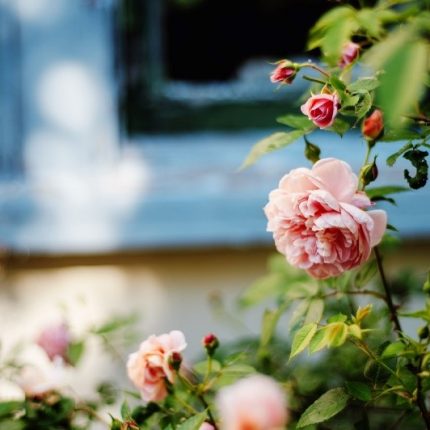My Skimmia Obsession
Here at CountryLife we sell lots of Skimmias and it is easy to see why they are getting more popular year after year. This versatile evergreen shrub has so many benefits to both the garden and the gardener. It will grow equally well in open ground or containers and because of their slow growing habit they need very little or no pruning.
The main attraction is the berries that appear from September through to March, six months of red berries! The pinkish/white flower buds, which appear in autumn and winter, are a prominent feature of the plant, as are the scented flowers which open in spring.

Getting the best out of your Skimmia
Before I go on and talk about the different varieties available I would like to discuss how to get the best out of your Skimmias. These frost hardy shrubs look after themselves pretty well and need very little attention but by following a few guidelines you will have successful flourishing plants that give interest all year round.
Top 3 tips for successfully growing Skimmias
- Positioning, Skimmias do best in semi shaded areas where they receive dappled light throughout the day.
- Sun exposure, too much can lead to unattractive yellowing of leaves, known as chlorosis.
- The roots like to be kept moist and do not tolerate dry conditions at all. If planting in a container make sure there is enough drainage that it doesn’t get waterlogged in winter.
Will my Skimmias have berries?
The number one question customers ask is, ‘Will my Skimmia have berries?’ My first reply is usually, ‘What variety do you have?’ The reason I ask this is because most Skimmias are dioecious, meaning they will either have male or female flowers on different plants just like our native Holly tree.
Both a male and female plant is needed in order to get berries. The pollen from male flowers fertilises the female flowers, resulting in berries on the female plant only. To find out which is male or female you will need to check the variety of the plant.
Different Varieties of Skimmia
Skimmia japonica ‘Rubella’ is an old favourite with most gardeners in Ireland and has been given an ‘Award of Garden Merit’ which is for plants of outstanding excellence. It is a compact variety with rich dark leaves that form impressive clusters of deep red flower buds throughout autumn and winter. In early spring the buds open into strong scented white flowers but unfortunately will never produce berries as ‘Rubella’ is a male plant.
Skimmia japonica ‘Obsession’, definitely my favourite, is a new variety of Skimmia japonica. It has been very popular with gardeners in recent years because it is a hermaphrodite which means it can self-fertilise and you are guaranteed berries every year because of this. So unlike other Skimmia varieties where you need a male and a female plant to get berries this one does all the work itself. What makes Skimmia ‘Obsession’ so special are the beautiful red berries combined with the red flower buds which appear on the plant in the autumn, bursting into flower around March.

Skimmia ‘Magic Merlot’ is a miniature version that has deep purple flower buds on variegated foliage. The light green leaves which are edged in a bright rich yellow colour are very popular for brightening up containers or seasonal planters. The leaves make a great backdrop to the plant’s darker flower buds. The flower buds start to appear in early autumn and then open up to white flowers in spring.
Best fertiliser to use for Skimmias
Skimmia will grow well in most gardens but they do prefer a slightly acidic soil. Adding a top dress of Growise Ericaceous Compost or Miracle-Grow Slow , release Ericaceous granules every spring will benefit them and make nutrients available to them.
To get the best from my Skimmia ‘Obsession’ I like to feed it using Ocean leaves liquid Seaweed Extract Fertiliser. I find seaweed fertiliser best, as it offers Skimmia everything they need and gives you lush green health foliage.

We’re here to help
If you need any help with choosing the best varieties of skimmias for your garden talk to any of our horticulturists in store. We’d love to help. If you have a Skimmia already bring in the variety or a photo if you don’t know, and our horticulturists can identify if it’s a male or female variety.












